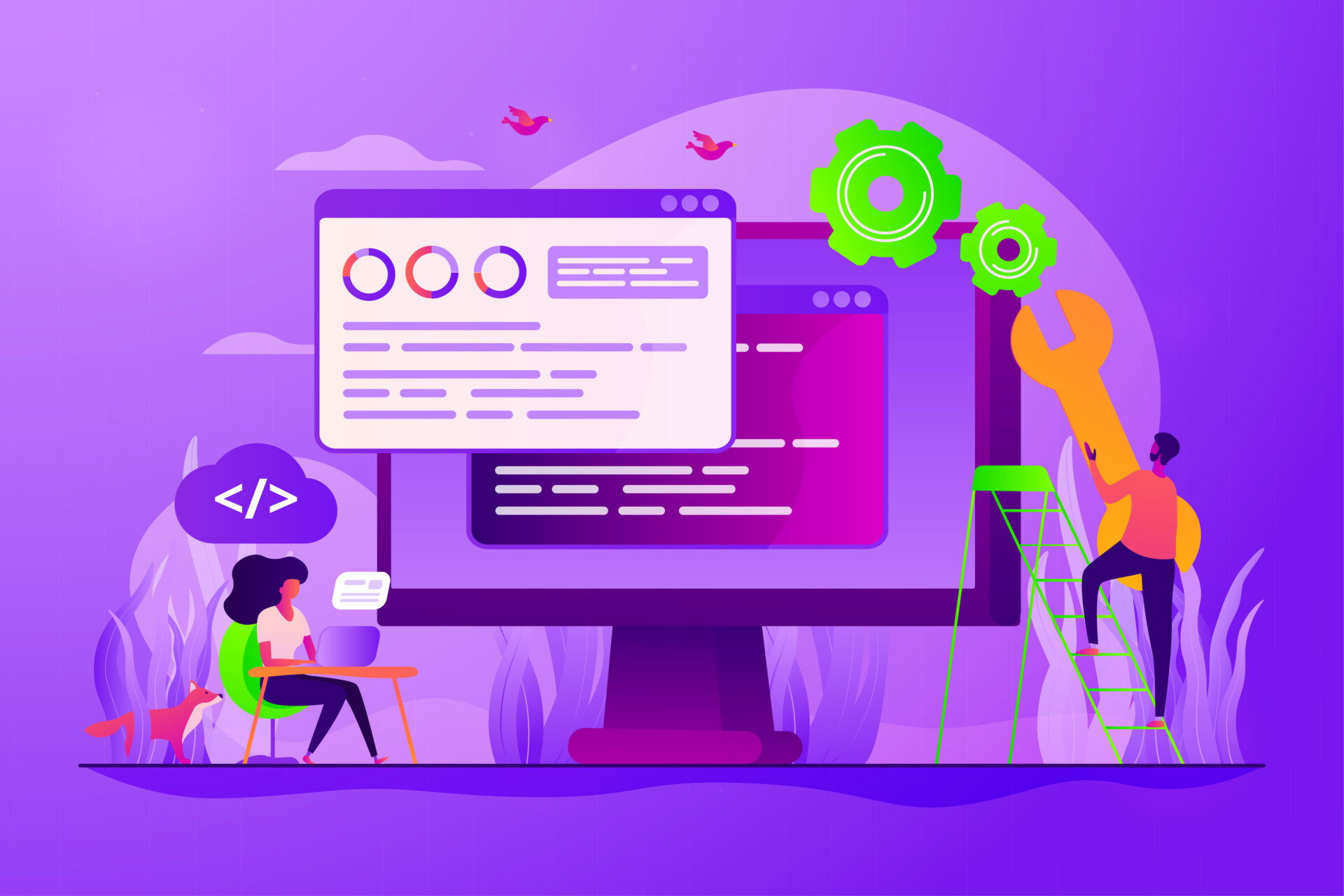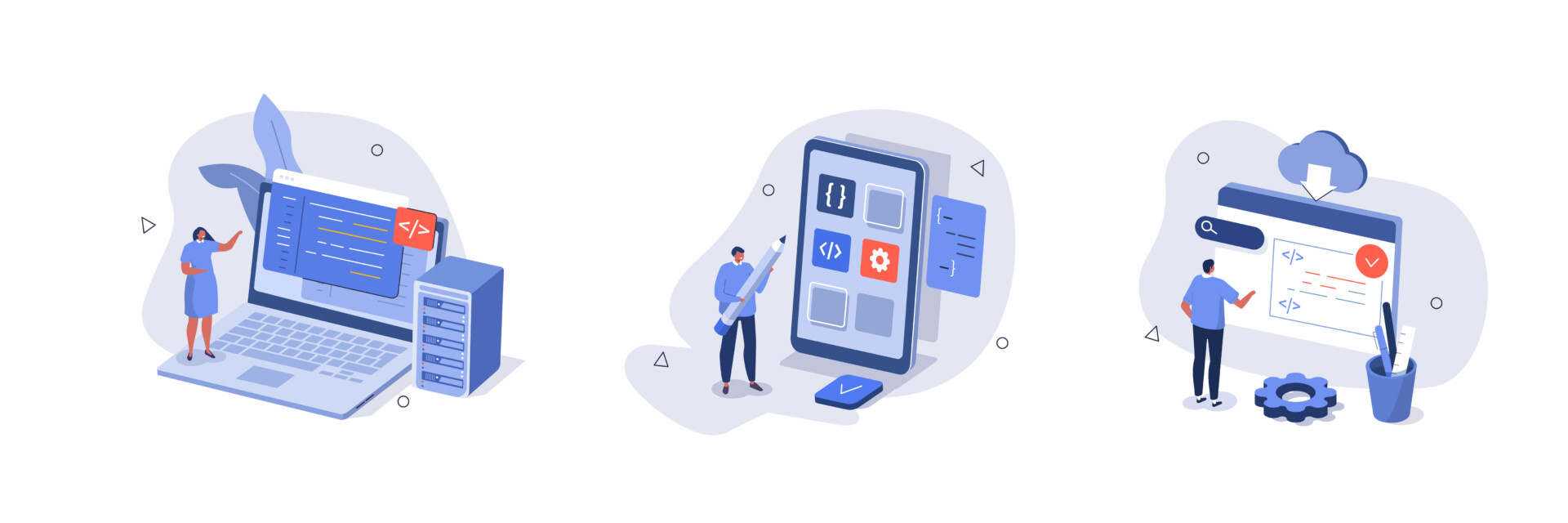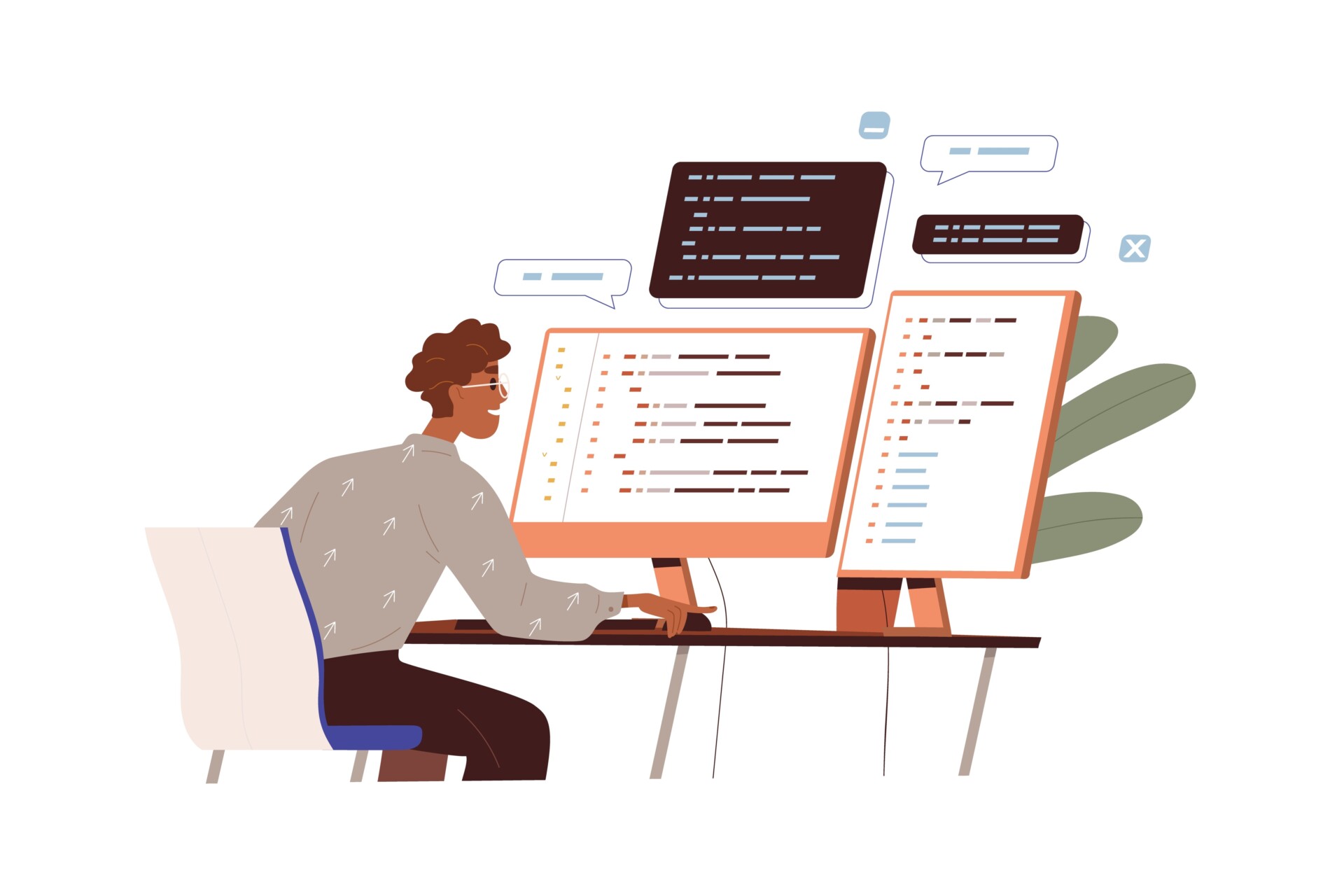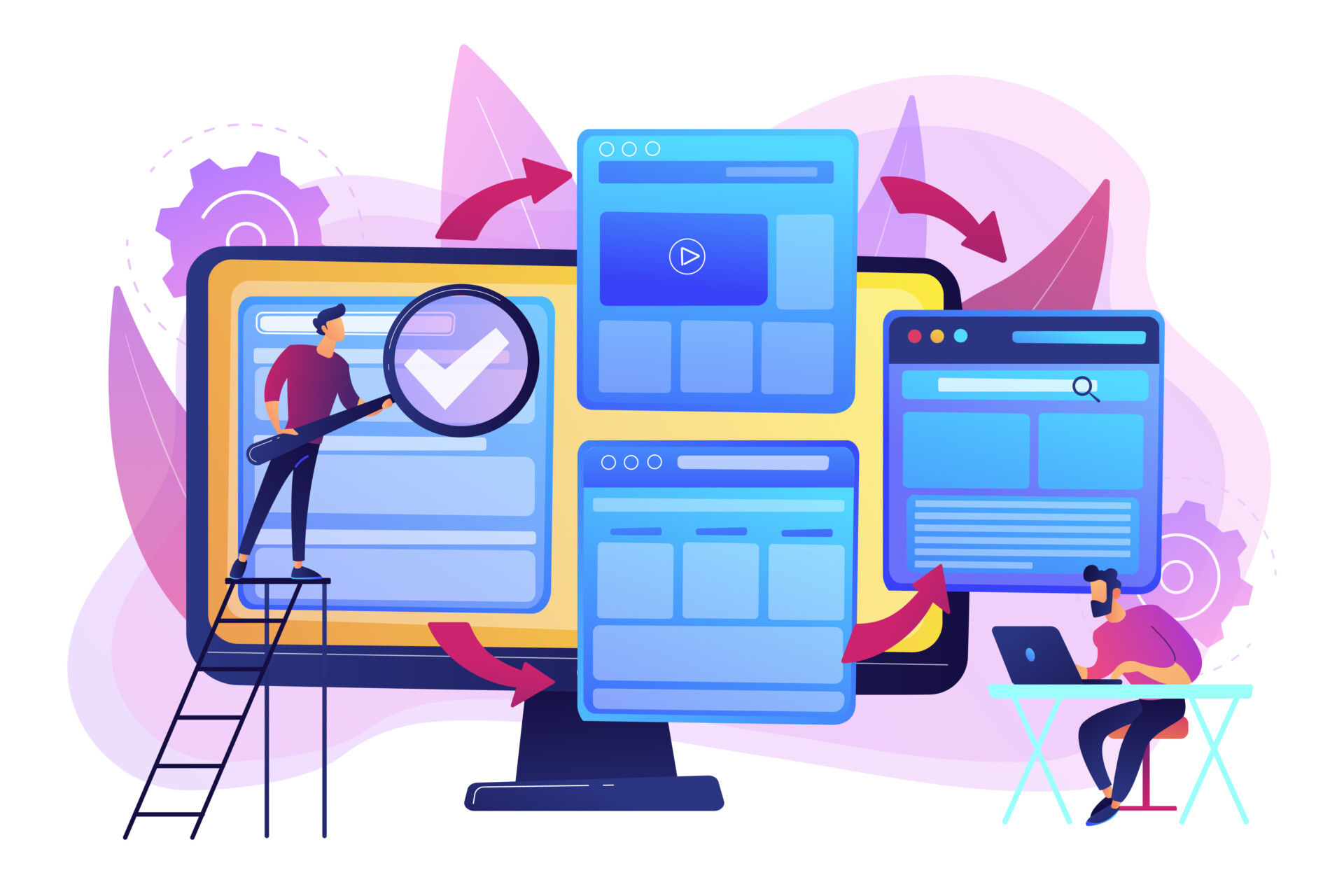
Backend development is an integral part of the IT ecosystem. Without it, even the simplest things, like websites, wouldn’t work correctly. That’s why skilled backend and web developers will remain in high demand across multiple programming styles and IT industries. We’ll go through the basics of what backend and web development involve and what skills are necessary to thrive.
- What is the difference between frontend and backend development?
- Is backend development easier than frontend development?
- Backend developer job description
- What backend skills are in demand?
- Education and work experience needed for a backend developer
- Backend programming languages: Java, Python, PHP, Kotlin
- Is Python frontend or backend?
- HTML, CSS, and JavaScript
- Knowledge of servers
- Knowledge of databases
- Knowledge of APIs
- Version control and version control systems
- Problem-solving skills
- Communication and interpersonal skills
- Finding jobs for backend developers
- Any questions or doubts? Talk about backend developer skills with our experts
What is the difference between frontend and backend development?
The difference between the frontend developers and the backend ones is relatively simple. Frontend or web developer who takes care of what is visible on the users’ end and what they can interact with. It includes interfaces, buttons, animations, links, and everything visible to the user. The developers who take care of the frontend are responsible for the look and overall feel of the website or application.
Behind everything open and visible are codes and operations that make it work and look as intended. That’s what the backend is. These are the parts of a computer application or a program’s code that allow it to operate, which a user cannot access. The code can be created and compiled in one or more programming languages.
It sums up the fundamental difference between the frontend and the backend. Simply put, the backend makes the frontend possible in most cases. Although creating the front without the backend is possible, for example, for building static sites, building the applications with the backend allows for dynamic changes. Implementing changes requires the frontend developer’s work in static websites or programs.

Is backend development easier than frontend development?
The question of “What is easier?” is on every developer’s mind who wants to enter the market. However, it’s impossible to give one definite answer, as it all depends on individual preferences, capabilities and the set of skills that they have or prefer to acquire. That’s why either of the two software development sides can be easier or more difficult. Let’s discuss the significant difficulties in the frontend and backend.
Difficulties of the frontend development process
The key challenges waiting for aspiring and current frontend developers include:
- The everchanging tool landscape: technologies evolve and will evolve in the foreseeable future. The existing tools keep changing, and new languages, methods and frameworks keep continuously appearing. This unstable environment helps to solve some issues, but it also creates new problems and gaps to be filled. Therefore, staying up to date with the rapid changes is essential.
- Modern frontend development solutions handle a considerable portion of business logic: previously, frontend was mainly associated with building visual user interfaces of websites and applications. The business logic relied on the backend. However, RESTful APIs enabled facilitating the integration of different services and building compelling applications. It created new responsibilities for the frontend developers, as part of the business logic has been moved to the front.
- Lack of an agreed-upon standard: the backend development community has their agreed-upon frameworks, tools or unspoken development patterns they follow. In the case of the frontend, there are no such agreed-upon standards. It may result in working in a codebase that may not agree with what a frontend developer has in their skillset.
- Handling flawed designs: frontend experts often have to make layouts and be tasked with modifying or improving them. However, at times those designs sound good in theory but not so much as a live product. And sometimes, the design flaws stay hidden until the end users can interact with them.
- Compatibility and size adaptation: users access the applications and websites from different devices with different screens. It requires flexibility in coding the frontend so that the layout of the applications can adapt to various browsers and screen sizes. The goal of creating a good interface must consider that the user will have a smooth and seamless experience, regardless of the device.

Challenges of the backend development
The most prominent challenges in the backend development include:
- Network problems and server crashes: different issues can occur on the network level. Be it trouble with latency, bandwidth or security, it may hurt the backend development, especially when not all developers consider that networks can be fallible.
- Scalability: backend experts need to remember that servers have limited capacity, and if they want their application or website architecture to grow, they need to adjust the scalability accordingly. The server can only handle a limited number of requests, so it’s good to consider both horizontal and vertical scalability.
- Security: backend developers often deal with public servers. These, in turn, are accessible to everyone over the Internet. Bad actors can create requests to extract information from a vulnerable server. And as much as it’s impossible to ensure 100% security, it’s essential to consider all possible threats.
- Consistency: sometimes servers read obsolete data while another may have the more recent document version. Occasionally the decision may include some tradeoffs to compromise performance and consistency, which must be decided in the design.
- Performance: measuring performance is complicated, and nearly everything backend developers do might impact it, from the language and framework selection to the applied algorithms. As much as it’s rather pointless to try and over-optimise. However, it’s good to find some middle ground for the development.

Backend developer job description
Now that some of the challenges are clarified, it’s time to move on to what exactly the job of a backend developer looks like and what are some of the critical responsibilities, technical skills and roles in the profession. Naturally, the duties and the required competencies will vary depending on the company’s needs. However, we’ll first review some more popular ones to cover the basics of in-depth knowledge.
Backend developer roles and responsibilities
The roles and responsibilities of a backend developer depend on the employer’s needs. However, we can list some of the most popular duties and roles. The responsibilities include:
- Writing the code and testing it
- Building prototypes
- Solving existing issues
- Profiling and analysing bottlenecks
- Designing APIs to support mobile and desktop clients
- Managing and optimising scalable distributed systems in the cloud
- Web development and optimising web applications for performance and scalability
- Developing automated tests and regression testing
The most typical roles for a backend developer include the following:
- Software engineer
- iOS developer
- Java developer
- Backend developer
- Backend web developer
- Full-stack developer
Depending on the role you’d like to fulfil, you will need knowledge of different programming languages and other tools useful in backend development. The knowledge of the frontend basics of important programming languages is also an asset.

Average backend developer salary range
Money is an essential factor when it comes to job search. Software development jobs are, naturally, no different when it comes to that. Naturally, it’s impossible to predict it with complete accuracy. It depends on the regional average and will not be the same everywhere. However, here are some of the plausible average numbers for some regions:
- US: $118,656 per year
- Europe: €50,000 per year
- Australia: AU$140,000 per year
- Singapore: S$72,000 per year
- Japan: ¥7M per year
These figures, however, are for a mid-seniority level. The entry-level and more experienced positions would appropriately involve a lower and higher backend developer salary.
What backend skills are in demand?
A backend developer is a popular term for web design and development. They’re behind the curtain to create an effect on the front end. Therefore, you must have an underlying foundation for developing backend client-side web applications that allow you to perform a job exceptionally. To become a successful backend developer, there have to exist several attributes to succeed in this field. This section discusses a few aspects which need learning to get into this field.
The next step in understanding how to build reusable software applications for your business is to gain basic knowledge.
Education and work experience needed for a backend developer
Backend developers can possess a bachelor’s degree in computer engineering. Similar work experience will also be helpful for this job. You will usually need experience working in either a backend or frontend position. Additionally, the candidate must acquire adequate knowledge of frontend technologies, including HTML, SASS JavaScript and CSS2. They also need to know about security and accessible software. The applicant should know PHP Scripting and MySQL, Flask & SQL alchemy.
However, even if you don’t have a proper degree and are more of a self-taught person, it doesn’t ruin your chances of still being successful. If you display the desired backend developer skills and can build a portfolio showcasing your talent, you can still land a job and start building your career.
Backend programming languages: Java, Python, PHP, Kotlin
Some of the essential backend developer skills include programming languages. Many languages are used for backend development, but we’ll cover a few of the most popular ones.
Java
This universal language hardly needs any introductions. Java has been a solid part of the backend and web backend development for decades. Among its many features, Java remains a language of choice because of its robustness, scalability, open-source library, diversity and security. Java is also one of the most valued developer skills because it allows for software development for multiple independent platforms.
Python
Python is one of the more versatile programming languages to date. Its popularity is still high and stable, so it’s a valuable position in the backend developer skills portfolio. With a simpler syntax, a relatively low starting learning curve and a vast, supportive community, Python can be an ideal choice for web development, embedded systems, and other backend sides. It’s an open-source library, and many available resources often make it a go-to option.
PHP
This language can play a vital role in the backend web development. PHP can significantly ease the web development process as it is easily integrated with databases like MySQL, SQL Server, PostgreSQL, and Oracle. So when a user searches the website, all the relevant data stored in the backend is looked for in the data structures. Upon finding the right pieces of data, the information is sent to the frontend and displayed for the user. It might come in handy for database administration.
Kotlin
Kotlin is mainly known for being an “Android language” and is vastly used in the frontend. However, Kotlin also has its assets and benefits of being a backend programming language. Its compatibility with Java and simpler syntax that reduces the boilerplate code are vital factors that make it attractive in backend development.
Is Python frontend or backend?
Python is a general-purpose programming language suited for backend and server-side development and frontend applications. Python created the Python language because of its simple syntax and wide use. Many development frameworks have been built on Python, including Django, using Flask as the front and back end. Frontend Python is not uncommon.
The versatility of Python contributes to its vast popularity in software development on both ends. Its relatively easy entry learning curve makes it attractive for those who want to start their journey as a front or backend developer.

HTML, CSS, and JavaScript
HTML, CSS, and Java are essential skills for backend developers. Although frontend experts generally employ this technique, they’re crucial to your backend development list. Although the backend usually uses different processes and programming languages, familiarising yourself with some frontend operations will make it easier.
HTML foundations will make it easier for you to understand the dependencies of the elements of an application programming interface and the website architecture. That’s why knowing the basics is good, even though you might not master them.
CSS basics may come in handy, as it’s considered one of the core languages of the web. Although it is not commonly used in the backend, and you don’t need in-depth knowledge of CSS, knowing the foundations will help you align better with the frontend side of the project.
JavaScript will be a useful skill, as sometimes, as a backend developer, you might be requested to integrate some frontend elements with the backend. It might not always be the case, depending on the job description. However, knowing at least some of the JavaScript workings is good.
Knowledge of servers
Servers run the most common web pages and applications on our remote computers. On the Internet, the terms “server” and “web server” refer to computer systems that receive requests and send them to client computers, including HTML and CSS. Because servers are most widely used for essential functions, most computers and server networks are never shut-down. These components in server infrastructure are an integral part of backend development. Examples of servers are Apache, Ngilx, and ISIS servers. You can find information on other backend development skills below.
Servers have become increasingly common for the distribution of essential services. This cannot be shut down. You should also know how to work on servers. Therefore, backend developer learning about backend development is important.

Knowledge of databases
Often in projects, data storage is necessary as they contain much info. Also, it’s important to know database basics. Backend developers must use relational mapping to store data and allow access when the database is unnecessary. Consequently, the developer can utilise MySQL, SQL, PostgreSQL, MongoDB, and others to manage DBMS.
Data structures and algorithms
A data structure is the most accessible form of organising information. You have to learn a few things in this area, including algorithms. The backend developer must understand the algorithm that can make them the best backend engineer in the field. What can be learnt in coding a highly efficient system is utilising the cache. A database also requires this to track user responses on their responses to a request. Therefore, backend developers should learn all of these aspects promptly.
Database management systems
Backend developers create coding to make relational mapping of data to the database. MySQL and SQLServers are among the most used DBMSs. Knowing about relational databases, their operation and their significance is important.

Knowledge of APIs
API (Application Programming Interface) are mechanisms that allow software components to communicate with each other using a set of definitions and protocols. For example, a weather app communicates with a smartphone operating system to display the weather information on the screen. The APIs are essential for applications to communicate and connect live to the same application on a different device.
SOAP and REST APIs
Sometimes, travel websites use the API to combine information about various companies and hotels. The application takes input from flights or hotel providers and displays them on travel websites. When a user book a flight, the API confirms the reservation. Typically two types of APIs are SOAP and REST. The back end helps us understand both aspects. SOAP is an Object – Object Access Protocol. It originated from Microsoft. The application utilises XML to make queries and receive replies.
REST (Representational State Transfer) APIs are more flexible than SOAP ones, and they define functions like GET, PUT, and DELETE that can be used to access the server data.
Version control and version control systems
This system helps monitor changes contained in the software. In terms of implementing version controls, they’re tools to aid developers in controlling source changes. A backend development engineer should have a good knowledge of both.
Version control allows tracking and management of the changes in the source code and other files. With this control, the developer can track every change in the code and access the history of changes in case something goes wrong along the development process.
A version control system (VCS) allows tracking changes in a file or multiple files over time. The most common VCS is a centralised one that helps store all the file versions. Developers can check out a file from the server, make changes, and check the file back in. The server then stores the new version of the file.
Problem-solving skills
Technical knowledge is the first skill a job applicant will look for, but knowing the coding codes does not always mean anything. Backend developers must solve problems well with a good solution. They have to have flexibility in solving any problem they face. Ideally, a backend developer can discuss how often they solved an issue with their previous websites.

Communication and interpersonal skills
When building a front end, concentration must be needed. And things get worse. A person who can be efficient at work may be a loner. It would be best to communicate since you will work on several projects in a group. You can talk about different ideas with clients and colleagues. Be prepared for a conversation, as it may lead to beneficial partnerships.
Backend developers are limited to developing special technical projects for their clients. Achieving a smooth execution of the work is essential for all involved teams to work effectively. Therefore you need to be well-equipped for communication. Without them, teamwork is complex for you. These soft skills are essential in the backend developer skills portfolio.
Finding jobs for backend developers
LinkedIn offers a great way to get a website development job. 77% of developers say they are looking for new jobs here. It’s one of the most popular recruiting platforms. StackOverflow remains attractive despite rapid growth in online job search sites, including Indeed and ZipRecruiter. Networks are always crucial. In some cases, hackers can get you a future backend developer.

Any questions or doubts? Talk about backend developer skills with our experts
If you have any questions or doubts or would like to ask for practical advice, don’t hesitate to reach out. Our experts would be happy to share their knowledge and expertise. If you’re interested, you can become a backend developer and join our team by applying for one of the open positions.
Katarzyna Świątek
Junior Content Specialist at DAC.digital





